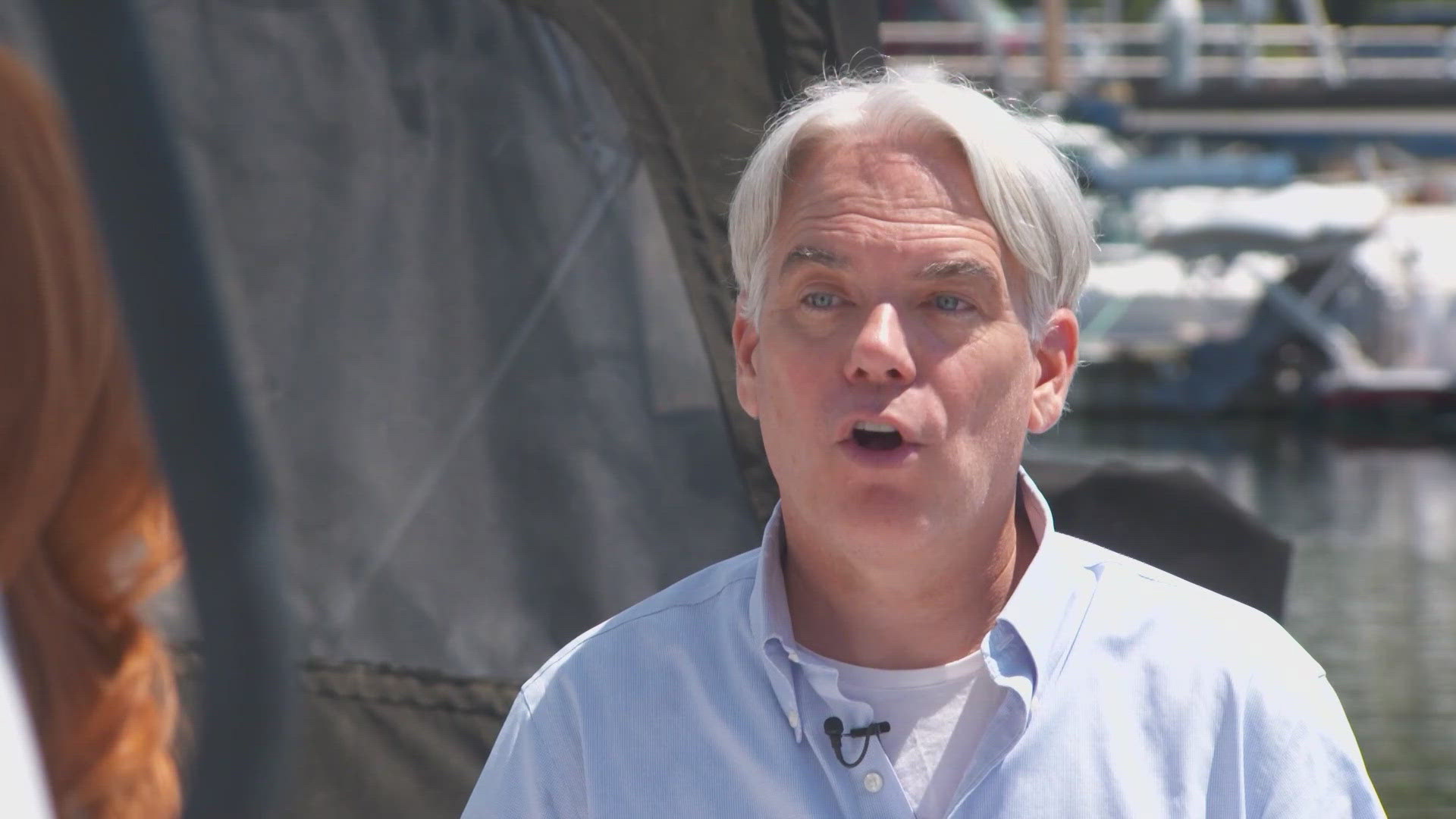SEATTLE — “If we do nothing, I think we will lose this population forever.”
That’s what Rob Williams, co-founder of nonprofit Oceans Initiative, said about the Southern Resident Killer Whales (SRKW).
A recent report published by Williams and 16 other scientists details the accelerated decline of the endangered killer whales.
“I think the first problem is that you have to quantify how big the problem is. And it takes decades of science to be able to say on average, in a good salmon year, the whale population recovers this much. In a bad salmon year, they decline this much,” said Williams, explaining why the numbers are so important.
What it would take for the SRKW population to grow
Currently, there are 74 Southern Resident Killer Whales, which has been declining steadily. To lower the species' endangered status a threshold was set of 2.3% growth per year for 28 years. Instead, over the last 40 years, the population has seen a decline of 1.5% per year.
Williams estimated that the 1.5% decline per year will continue for the next one to two generations, then accelerate to 3% per year after that.
The report details the speed at which these orcas realistically can reproduce and show how difficult it will be to increase the population.
Of the 74 orcas living today, approximately a dozen females are able to reproduce and are carrying the future of the population. With a gestation period of 17 months, those 12 female orcas would likely have a calf every 3-5 years.
However, about half of calves die and older whales are also dying each year, so in reality growth is a slow process.
Williams said if the population can grow to 80-90 whales in the next 50 years, experts will breathe a sigh of relief.
“So we have to manage our expectation that we didn’t get into this situation overnight and it will take a long, long time for us to recover,” said Williams.
What needs to change to stop the decline
He said action needs to be taken now to correct the three big factors that are contributing to the decline: lack of food, specifically Chinook salmon; noise interfering with the orcas' hunting abilities; and contaminants in the water and food impacting their health.
Leaders have taken steps to try to combat some of these problems.
On January 1, 2025, a new law will go into effect in Washington that requires at least 1,000 yards of distance between boaters and orcas.
Williams said other options to improve conditions for Southern Residents could involve reducing the Chinook salmon harvest, increasing hatchery production or scaling back Chinook salmon fishing in the open ocean to leave them for the orcas.
Tara Galuska with the Governor’s Salmon Recovery Office also points out to the November’s ballot, when voters will be asked whether or not to repeal the Climate Commitment Act. While the push for overturning the act stems from a goal of keeping gas prices low, Galuska said if it is repealed, millions of dollars that benefit salmon rehabilitation will be lost.
A document from the governor’s office breaks down the environmental benefits of the Climate Commitment Act, which includes more than $360 million in investments, many in direct salmon projects, but most others also benefit salmon.
The list of those projects includes:
- $50 million for tribal climate adaptation grants
- $60 million for protection grants for rivers and wetlands
- $50.9 million for supporting local government planning related to climate change
- $52.3 million for fish passage projects
- $25 million for the Quinault Tribe Legacy Forest Acquisition
- $23 million forest management treatments on state trust lands
- $44 million for salmon habitat and climate resilience projects
- $17.6 million for reduction of flooding and improving salmon habitat with "Floodplain by Design" grants
- $11 million for the Conservation Reserve Enhancement program
- $10.1 million for Puget Sound acquisition and restoration
- $10 million for Firewise grants to local governments
- $10 million for wildfire restoration on state, private and tribal lands
- $18.8 million to revitalize the Trust Land Transfer program
- $7 million for Deschutes Estuary restoration
- $5.5 million for Climate Plus grants for schools
- $4.5 million for a new Climate Corps workforce training program for young adults and veterans
Leaders in the orca recovery space all agree: action needs to be taken now to save this population.

